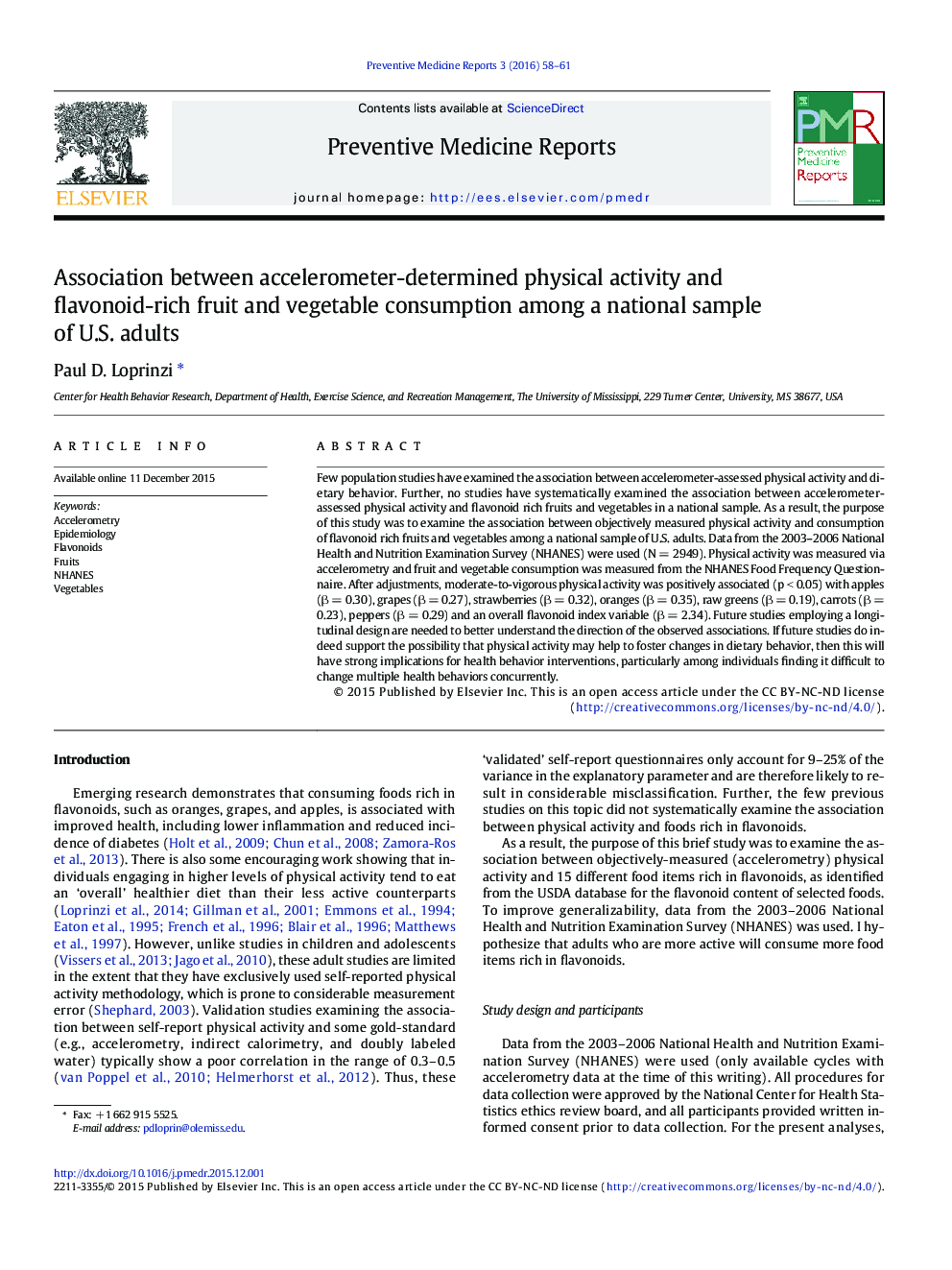| Article ID | Journal | Published Year | Pages | File Type |
|---|---|---|---|---|
| 4202330 | Preventive Medicine Reports | 2016 | 4 Pages |
•A national sample was employed.•An objective measure of physical activity was used.•More active adults consumed more flavonoid-rich fruits/vegetables.•Mechanistic work on this topic is needed.
Few population studies have examined the association between accelerometer-assessed physical activity and dietary behavior. Further, no studies have systematically examined the association between accelerometer-assessed physical activity and flavonoid rich fruits and vegetables in a national sample. As a result, the purpose of this study was to examine the association between objectively measured physical activity and consumption of flavonoid rich fruits and vegetables among a national sample of U.S. adults. Data from the 2003–2006 National Health and Nutrition Examination Survey (NHANES) were used (N = 2949). Physical activity was measured via accelerometry and fruit and vegetable consumption was measured from the NHANES Food Frequency Questionnaire. After adjustments, moderate-to-vigorous physical activity was positively associated (p < 0.05) with apples (β = 0.30), grapes (β = 0.27), strawberries (β = 0.32), oranges (β = 0.35), raw greens (β = 0.19), carrots (β = 0.23), peppers (β = 0.29) and an overall flavonoid index variable (β = 2.34). Future studies employing a longitudinal design are needed to better understand the direction of the observed associations. If future studies do indeed support the possibility that physical activity may help to foster changes in dietary behavior, then this will have strong implications for health behavior interventions, particularly among individuals finding it difficult to change multiple health behaviors concurrently.
